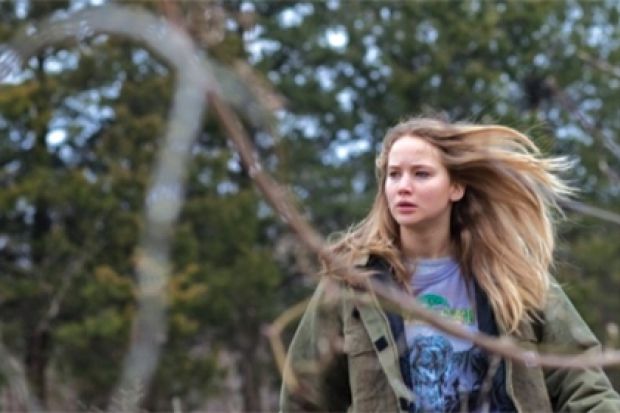Winter's Bone
Now on general release in the US and Canada; released 17 September 2010 in the UK
Directed by Debra Granik
Starring Jennifer Lawrence, John Hawkes, Kevin Breznahan.
Dark, dark, dark. Even the scenes filmed in bright sunlight appear in wan, washed-out tones of blue or green, as if seen through a glass palely. Winter's Bone is a bleak film about survival against overwhelming odds. It is symptomatic of the world in which it is set that Ree Dolly, the 17-year-old girl who is its protagonist, has a name that sounds foreign, at least to European ears, and is stranded in a culture self-contained in its squalour, penury and isolation. She lives with her mother and young siblings in a house in the Ozarks (the film was shot in rural Missouri). This is no paradise. Because her mother is an invalid, Ree has no choice but to scavenge for food in the woods, teaching her brother and sister how to shoot and gut squirrels.
Winter's Bone is predicated on the old-fashioned device of the quest. In literature it looks back to the Arthurian legends; in cinema, one thinks of John Ford's The Searchers and Sam Peckinpah's Bring Me the Head of Alfredo Garcia - to which Winter's Bone is a worthy successor. Ree is trying to find her lost father who, before he disappeared, put the family house up for his bail bond, and whose imminent failure to appear in court will precipitate the family's eviction. She has no choice but to follow his murky trail among the inbreds and grotesques who live close by, many of whom are related to her.
She is up against it from the outset. The only thing between her family and complete destitution, Ree goes from one reluctant informant to the next, her physical safety constantly under threat. Reminders of mortality are everywhere: the deer's corpse hanging in a neighbouring house; a rural graveyard by night; a small antler dangling from the rear mirror of a car. These traces of American Gothic serve as uneasy reminders of the barely suppressed violence by which so many are possessed.
Winter's Bone pits a teenage girl against the collective hostility of the law and the hillbillies among whom she lives. It is her unstated stoicism that grants her nobility: "That's the way things go," she says, recognising the hopelessness of her situation. Yet it is her courage and determination that provide the matter of the story. Although just 17, she speaks with the wisdom of an old woman. "Never ask for what ought to be offered freely," she advises her young brother, when he suggests begging food from their neighbours.
The men in the film are losers: drunks, drug addicts, cowards. None is any use to Ree; at best they are time-servers motivated by venality, enforcing laws and customs they know to be unjust. By contrast, its female characters are empowered survivors. They are the gatekeepers, breadwinners and redeemers in this fractured society. It is they who hunt game, work at Walmart during the day, and cook on wood stoves by night. It is they who take care of deprived or sick neighbours, and they who are ultimately responsible for what happens to Ree and her family. In the film's closing shot, Ree's infant sister picks up the banjo their uncle has been unable to play, as if assuming a potency of which he was incapable. This understated feminism may owe something to the director, Debra Granik, and there is nothing unsubtle about it. It is thoroughly integrated into the environment of the characters, part of the society in which they exist.
The performances in Winter's Bone are stellar throughout, because they are not performances in the normal sense. This is one of those rare films that betrays no hint that any of its actors are actually acting - something true even of the young children in the cast, none of whom does anything cute or self-conscious. This is not purely a matter of understatement; Granik is known to encourage improvisation, and has introduced a number of amateurs among her largely professional cast. These elements, and the sophistication with which she uses verite techniques, seem to make her characters at once recognisable and unknowable. In other words, they possess the depth one expects of good literature. That may owe something to the fact that Winter's Bone is taken from Daniel Woodrell's novel, which contains information not mentioned in the film. It is a stripped-down, lean tale, yet all the events seem to betoken an unspoken hinterland across which the film is constantly gazing.
So deeply embedded in the culture of rural America is this film that European audiences may find the accents hard to penetrate. Don't be put off. This is a powerful story comprised of elements we have known since childhood - about heroism in the face of danger, regardless of the consequences. Its transition to the screen has been managed with sensitivity and intelligence. It demands to be seen.
Register to continue
Why register?
- Registration is free and only takes a moment
- Once registered, you can read 3 articles a month
- Sign up for our newsletter
Subscribe
Or subscribe for unlimited access to:
- Unlimited access to news, views, insights & reviews
- Digital editions
- Digital access to THE’s university and college rankings analysis
Already registered or a current subscriber?
